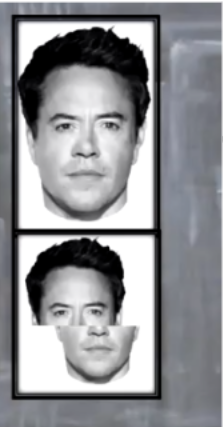Lecture 9: Individual Differences in Face Perception
1/20
There's no tags or description
Looks like no tags are added yet.
Name | Mastery | Learn | Test | Matching | Spaced |
|---|
No study sessions yet.
21 Terms
Why does face perception matter?
Allows for assessment of people in your environment, based on impression, emotion and identity cues. This is important to judge safety/ if should approach/hide
What is the individual difference approach?
Basically preserving individual data to look at the individual relationships that each participant may have. What makes some people different or the same. Some people really good or really bad
Can we use an individual difference approach to show that face recognition is a distinct and stable trait?
Yes?
What did the genetic evidence show that face recognition is a distinct and stable trait?
Looking at monozygotic twins vs. dizygotic twins, there seems to be a strong relationship between twin’s capacity to recognise faces, suggesting that face recognition is a trait associated with genetics.
What did the neurological basis show about face recognition as a distinct and stable trait?
There are areas of the brain that are correlationally linked between their activation and face recognition ability. Suggests evidence for face recognition
Note that neural responses in the FFA are associated with high area level vision of discrimination, aka not just faces.
What does measuring other abilities show about face recognition as a distinct and stable trait?
individual differences in face recognition are unusually specific, in the sense that they are mostly separate from IQ. Note that most traits do correlate with IQ. A study found a correlation of less than 4%.
What is the test re-test reliability show about face recognition?
Shows that when tested one week apart, different test of face recognition ability show moderate to high correlations
Shows that face recognition is stable.
What is the trajectory of face recognition ability
Ability peaks early to mid 30s and slowly declines from around 40 -50 . these peaks are different from Fluid intelligence and Cystrallied intelligence peaks
What are the tools used to measure face processing abilities?
Perceptual matching - are the images are the same
Perceptual discrimination - which face is more happy
Recognition memory - is this face shown previously
naming/labelling - who is this
Rating - how trustworthy is this face
What are the different individual differences approaches?
Full range approach - which examines variation across typical ranges , using, correlations and analysis
Extreme selection - which compared cases of extreme low or high skill, using group comparisons.
What is a super recogniser?
‘Super-recogniser’ is a term given to someone gifted at face recognition. Must show consistent superior performance across a range of face recognition tasks.
This is done using perceptual matching, recognition memory and labelling/naming.
What is the difference between student controls and super-recognisers?
Found that Super-recogniser are more accurate with just 2 second to see the faces, getting above 90% accuracy compared to 77%.
What is a gaze contingent spotlight?
A tool which allows us to pinpoint exactly where people are looking in the face. A spotlight follows the eye gaze of people to reveal only a small amount of a picture .
Finds that super recognisers are still above at control participants
Find that super recognisers explore more visual regions compared to other types of controls.
Are super-recognisor abilities face-specific?
More able to recognise monkeys, fingerprints, houses, covered faces and specific faces than controls.
Note that there is a generalised improvement, but face recognition ability was way above.
They are better at describing faces compared to controls as well, finds that the super-recogniser performance were actually better when the descriptions were short
Explain using TV for research?
In the case of super recognisers, have used TVs as a way to intermix and track character plots. Records what SR are doing whilst watching TV shows and then records again once after the show finished. This was inspired by a Game of Thrones study → wherein participants were asked to recognise characters
In the eastenders study, found that SR were more able to recognise faces, voices and objects compared to controls, effects were largest in Faces, then objects and then voices.
Found also a small difference in what SR looks at, they look a little bit more than the control (only slight preference).
At what stage does processing difference emerge?
SRs outperform others even with brief exposure (2s) → suggests efficiency in early visual encoding.
Gaze-contingent spotlight studies show SRs advantage is linked to how they sample information from the face.
Still better using local feature information (i.e. with spotlight)
More visual exploration of the face.
Are face skills distinct or related to other abilities?
SRs’ ability is largely face-specific, but not entirely
Who is Chuck Close?
An artist who had Prosopagnosia, drew faces. Managed to do this by pixelating faces shapes and therefore allows him to actually draw himself. Suggests that Congenital prosopagnosia might occur as a general holistic processing problem
What is Holistic processing?
The capacity to see something as a collective, our tendency to group things together when features are shared.
Example of how to measure, the competent faces tasks, wherein face is aligned vs. not
Prosopagnosics tend not be impaired by the alignment of faces, showing that they have impaired holistic processing.

Why does psychology matter?
Everyday Social Functioning
Face recognition ability impacts relationships, trust, and social inclusion.
Impairments in FR can have profound impact on these.
Natural Expertise
Studying SRs helps us understand what makes an expert.
Can inform training or coping strategies for impairments Security & Law Enforcement
SRs can assist in identifying suspects and border control.
Criminal Justice
Understanding individual differences informs lineup procedures and reduces wrongful identification